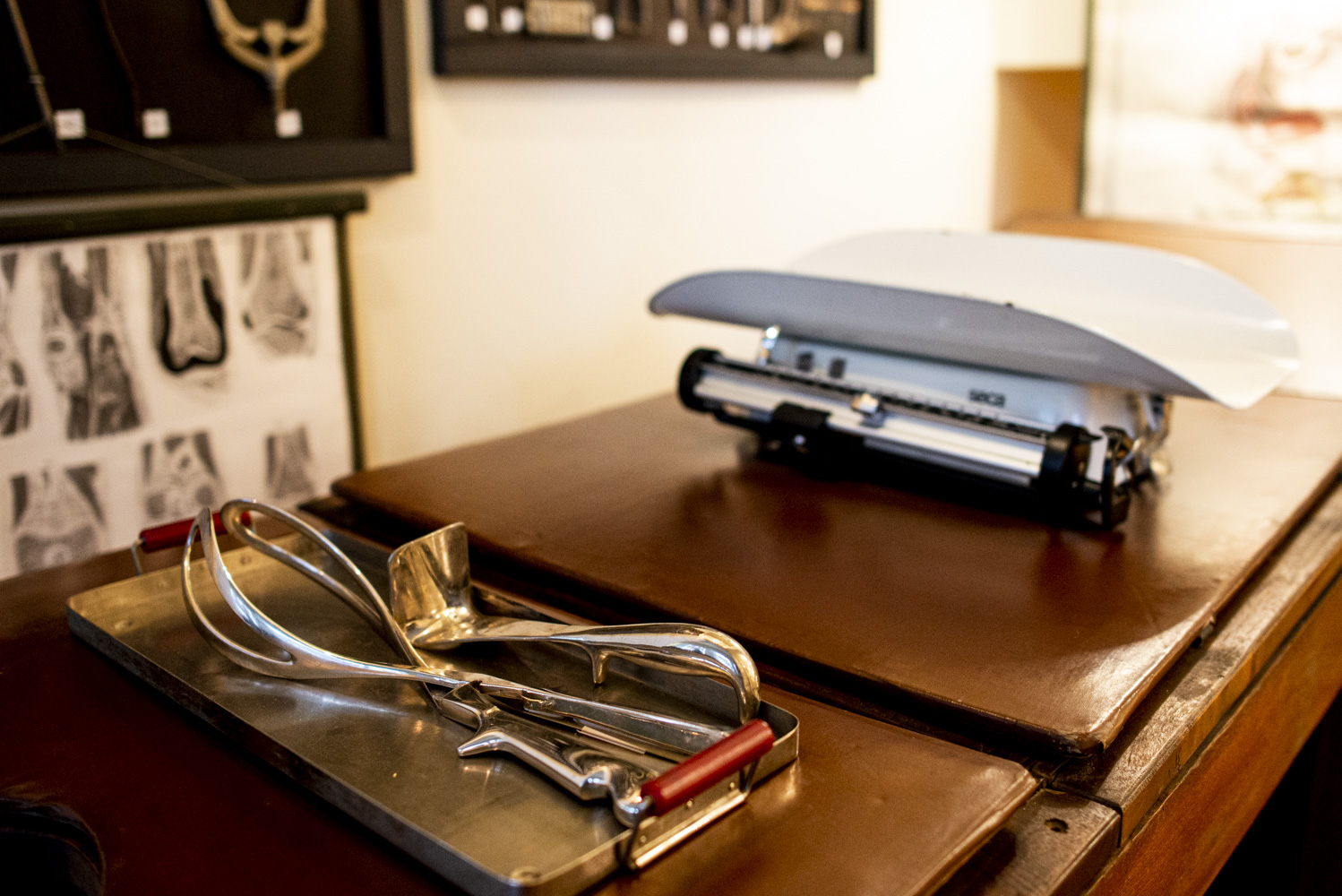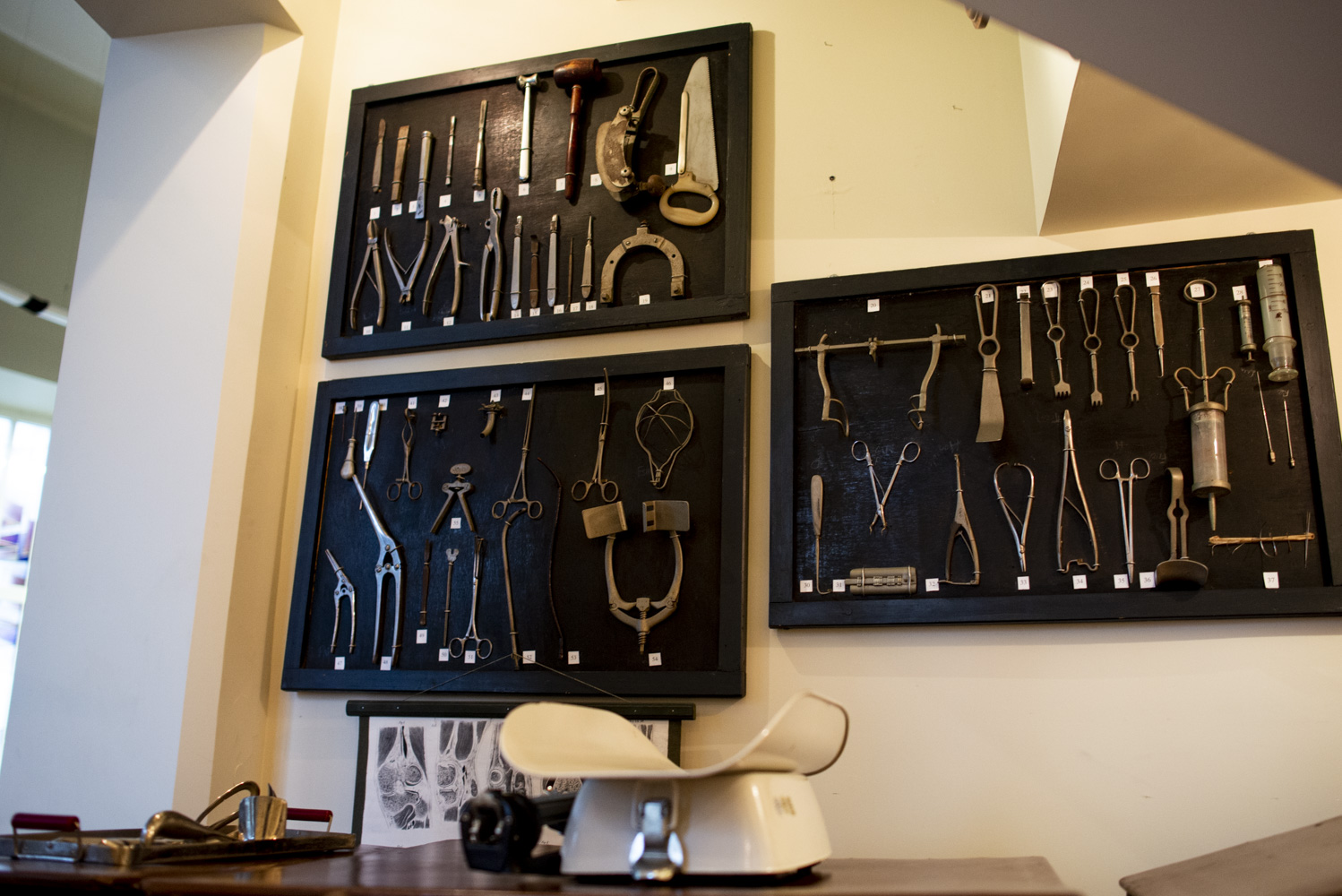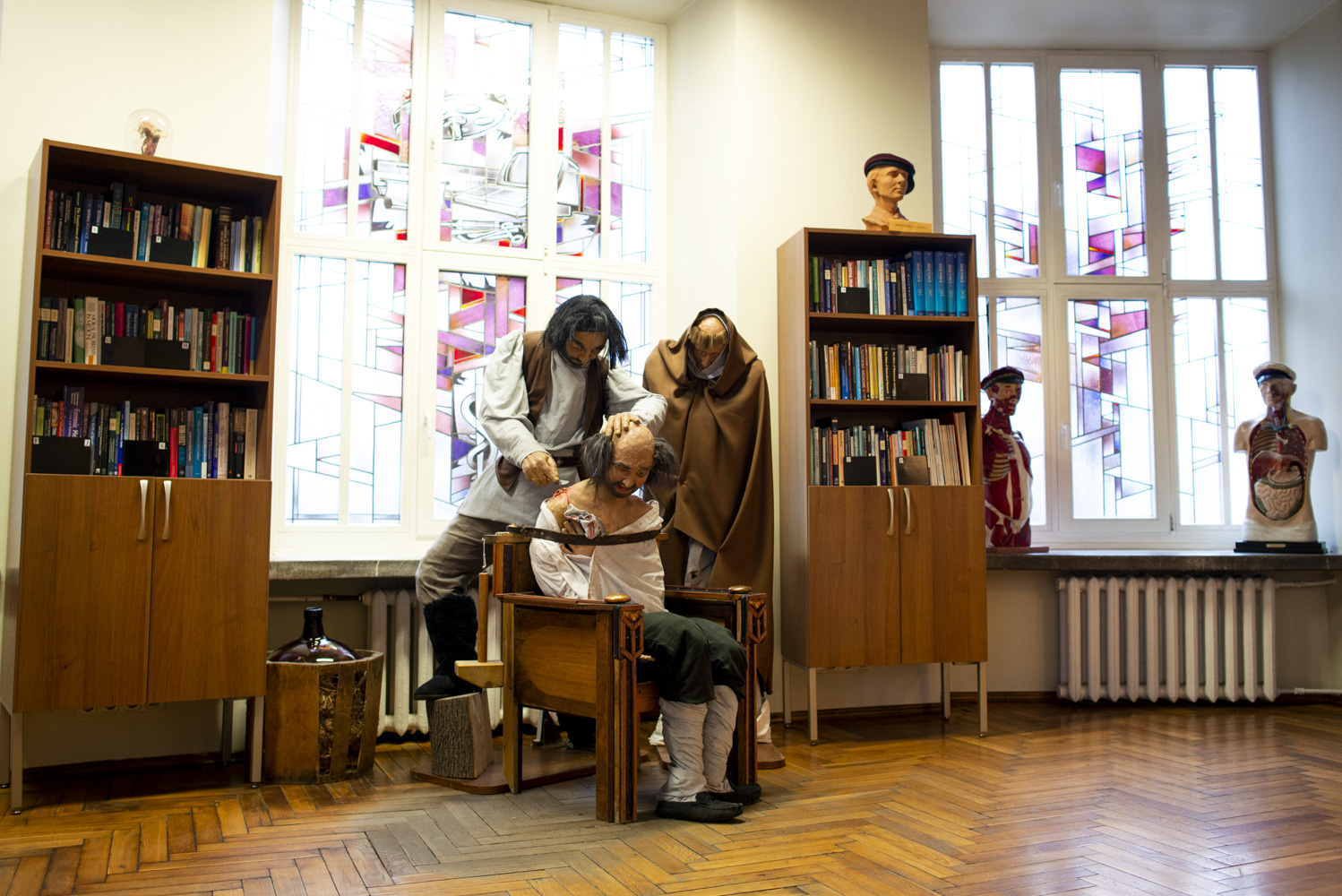
How has the Museum of Medical History and its exposition changed over the years? What can you see in the museum today? The answers may be found in the article by museologist Irma Kušeliauskaitė and lecturer of Faculty of Medicine Dr. Aistis Žalnora and published in the scientific journal “Papers on Anthropology”.
The Museum of the History of Medicine of Vilnius university
The medical museums of Vilnius University have a long and treasured history dating back to the end of the 18 th century. The first museum was that of anatomy founded by the French anatomist and surgeon Jacques Briotet (1746–1819) in 1777.
It contained both normal and pathological anatomy specimens and pre-dated the formal establishment of the Medical Faculty (Collegium Medicum) in 1781. The museum was born out of the clinical practice since the professor’s wife served as a midwife in local clinics. Academic museum expositions soon attracted flocks of citizens and guests of the city as one of the biggest in the region. The collections grew and flourished in the beginning of the 19th century and were among the finest in Europe. Owing to head of the museum Adam Bielkiewicz (1797–1840) the museum grew up to ~3000 preparations.
In 1832 Tsar Nicholas I closed the University. The Medical Faculty became the Imperial Vilnius Academy of Medicine and Surgery and existed until 1842. Most of the museum collection were taken apart and moved to Kiev. After the Imperial Vilnius Academy of Medicine and Surgery was closed, the Vilnius Medical Society took over what remained of the collections and began to rebuild them. But the collection could not match the old ones in it’s numbers and variety.
When Lithuania regained its independence in 1918, the first Lithuanian provisional government attempted to re-establish Vilnius University but failed because Vilnius and its surrounding regions were occupied by Józef Piłsudski’s Polish Army in 1919. On 28 August 1919, Piłsudski signed the decree re-establishing Vilnius University under the Polish government as a Stephen Bathory University (1919–1939).
In spring 1920 the Polish anthropologist J. Talko-Hryncevicz established the Department of Prehistory and Anthropology and the Museum in the Faculty of Medicine. The first exhibition consisted from the skulls which had been found in the churches of Vilnius and in other places around During the summer of 1920 the first skulls has been collected in Vilnius and Smorgonys. Later the majority of them has been taken to the Department of Anatomy. It was the beginning of the huge collection of skulls. The most valuable part of the collection – the trepanned skulls. The skulls lie in the Department of Anathomy in Vilnius, one of them can be also found in Kaunas, Museum of the History of Lithuania Medicine and Pharmacy.

The later collection developed from the practical needs of a Vilnius city. The city has been expanding, a lot of craniological and osteological material were found during the excavations and taken to the Anatomy Department by prof. Michał Reicher (1888–1973). There are a lot of short messages in a local press about the skulls or skeletons found in a different places in Vilnius, which match the notes in the notes in the inventory book of the Anatomy Department by date and place. The skulls were also used during the workshops of medical students. A good state of the skulls shows that the collection has been formed selectively – the better skulls has been collected and the rest probably were taken to some other places.
Among the other skulls and skeletons, the remains of Lithuanian-Polish noble Barbora Radvilaitė, Elžbieta Habsburgaitė and Aleksandras Jogailaitis were found. In the inventory book we can see some notes about the moulds made from the sacrum and other bones of these nobble men. In 1924 Vilnius Medical Society pathologic anatomy preparations were donated to the Pathological Anatomy Department of Stephen Batory University.
After the death of Józef Pilsudski (1935) his brain has been examined in Vilnius Brain Research institute and the conclusions of the research were published in 1938 by neurology professor Maximillian Rose. There is a unique copy of the album of Pilsudski’s brain and M. Rose’s book “Mózg Józefa Piłsudkiego” (“The Brain of Joseph Pilsudski”) kept in the Museum of the History of Medicine. It is among very few such books in Poland. Pilsudski himself was buried in the Wavell cathedral (Poland), his heart was buried in Vilnius, but little people knows that his brain is not in Wawel with his body. The brain was lost during the World War II.
After the reoccupation (1941) of Lithuania the Faculty of Medicine was completely reorganized. The modern museum was reestablished only in late 20-th century by dr. Aurimas Andriušis and Silvija Stakulienė. The museum has an exhibition of surgical and other medical instruments and equipment of various purposes and different historical periods; personal collections of professors and lectures of Vilnius University, the Faculty of Medicine; drug collections etc.

A mobile educational exhibition “Dissemination of Medical Science at the Old Vilnius University in 1781–1842” is on display at the Museum. The mentioned exhibition serves both public and academic needs since it’s one of the best ready-made conspectus of the Faculty’s History which is almost every time used by our students at the exam day.
One of the oldest museum’s exhibits is Philip’s Verheyven’s (1648–1710) anatomy book “Corporis humani anatomia” published 300 years ago (1699) in Leipzig. The book resembles the late renaissance manner of anatomy depictions similar to the Andrea Veaslius (1514–1564) tradition.
In 2010 a medicine student, M. Jurkonis, gave the museum an impressive wax sculpture composition he made himself “A Barber-Surgeon Guild”. This composition is a reconstruction of a workshop of a 16th century surgeon-barber.
The museum also stores some dentistry exposition. The original foot power drill similar with the drill once constructed by John Greenwood (1760–1819) is an artefact of Soviet dentistry. Because of the belated electrification in SSRS the foot power dental drill was one of the possible solutions to supply the dental cabinets of that period.
Full article by museologist Irma Kušeliauskaitė and Dr. Aistis Žalnora may be found HERE.
